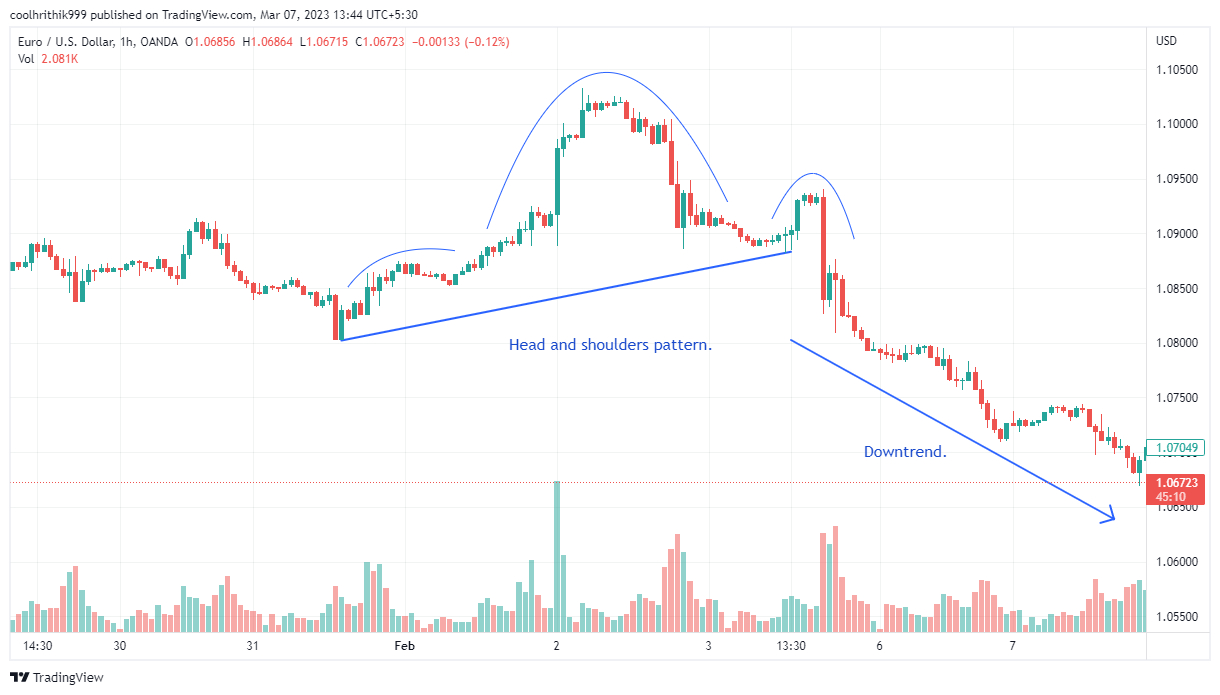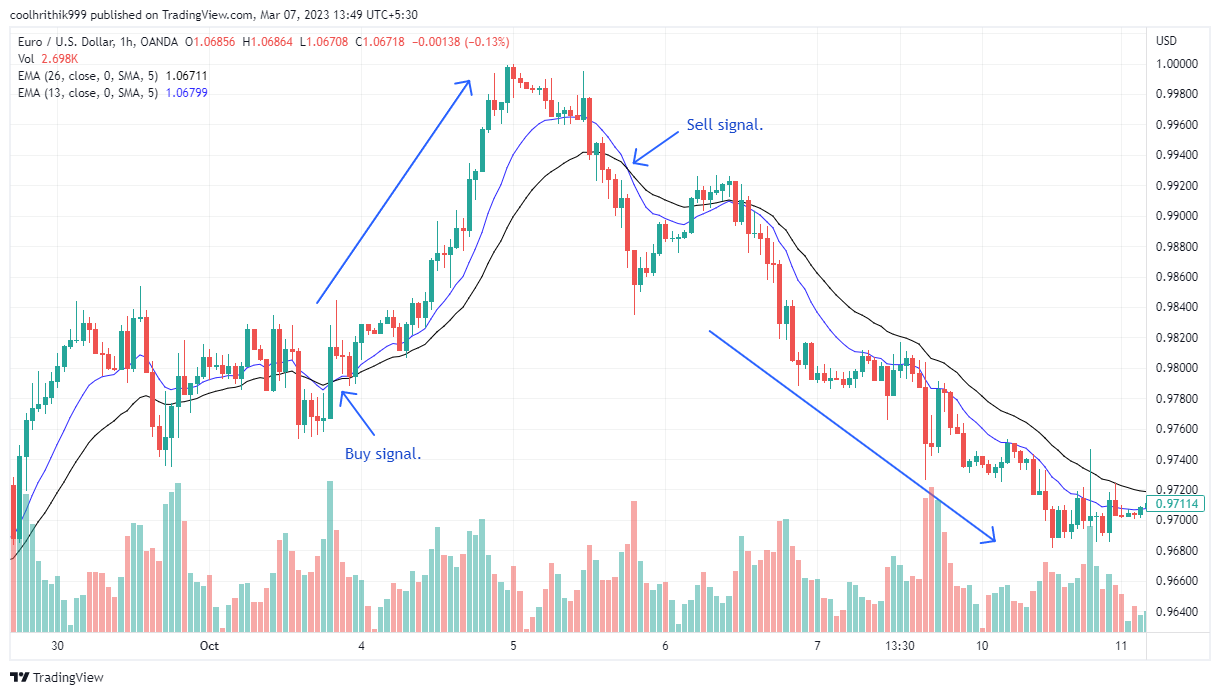Understanding Bear Markets: When Assets Go Down
A bear market is a period of time in which an investment asset, such as stocks, bonds, or commodities, experiences a decline in price for an extended period of time.
A bear market is characterized by a sustained period of downward-trending prices of assets. It is often defined as a drop of 20% or more in the value of an asset or index. The occurrence of a bear market signals a weakening economy, and can be caused by a variety of factors, such as an economic recession, rising unemployment rates, and political and social unrest.
Investors typically take a defensive stance during a bear market, selling off assets to stop further losses. To survive and make money during a bear market, investors should be aware of the characteristics of a bear market and the risks associated with investing.
Top 3 related terms
-
Short selling, often referred to as "shorting", is a trading strategy where an investor sells a currency or financial instrument they don't own. The goal is to profit from a declining market by borrowing the asset from a broker, selling it at the current market price, and then repurchasing it at a lower price to return it to the broker
-
Options trading is a derivative strategy that involves trading financial contracts called options. These contracts give the holder the right, but not the obligation, to buy (call option) or sell (put option) an underlying asset, such as a currency pair, at a predetermined price (strike price) within a specified period (expiration date). Traders use options to speculate on price movements, hedge against risks, or generate income
-
A trend-following strategy is a trading approach that seeks to capitalize on existing market trends. Traders using this strategy believe that asset prices tend to move in persistent trends and aim to enter positions in the direction of the prevailing trend. Common tools for trend following include moving averages, trendlines, and momentum indicators
Characteristics of a bear market
In a bear market, asset prices tend to be declining, accompanied by a feeling of pessimism and economic difficulty. This type of market is characterized by a decrease in the prices of stocks, bonds, commodities, and other financial instruments, which can remain low for an extended period of time. It tends to create a sense of fear, uncertainty and doubt (often colloquially dubbed “FUD”) among investors as they anticipate further losses. Additionally, the economic environment is often seen as unfavorable, with businesses struggling and unemployment rates rising.
The decline in asset prices can impact the entire market, as investors become hesitant to invest in the stock market or other financial instruments. This reluctance to invest can lead to further losses as the market declines further. Additionally, a bear market can cause a decrease in consumer spending, which can lead to reduced economic activity. This can be especially damaging to businesses that rely on consumer spending, leading to further losses.
The pessimistic outlook of a bear market can also lead to an increase in investor anxiety. Investors may become reluctant to take risks, instead opting to hold on to their investments in the hopes that prices will recover. This can lead to further losses as investors wait too long to invest, missing out on potential gains, which is another reason why knowing how to behave in a bear market is of the utmost importance.
In a bear market, investors may be tempted to sell their investments to avoid further losses. However, they should consider their long-term investment goals before engaging in such activities. Some investors may choose to invest in alternative strategies such as short selling or options trading. These strategies can be risky and should only be used by experienced investors.
Overall, a bear market is characterized by declining asset prices, pessimism, and economic difficulties. Investors must be aware of the risks associated with such markets and take the necessary precautions to protect their investments. Understanding the characteristics of a bear market helps investors be better prepared to survive and potentially make money.
Causes of a bear market
Various factors can trigger a decline in asset prices, including:
-
Economic recessions, which reduce the amount of money available for individuals to spend, can have a direct impact on asset prices. When the economy is weak, investors become more risk-averse, leading to a greater demand for safe investments and less demand for riskier assets. This decrease in demand leads to a decrease in asset prices
-
Geopolitical events, such as wars or political unrest can also have a major impact on asset prices. Such events can create uncertainty and fear among investors, leading to a decrease in demand for risky assets
-
Corporate failures, e.g. bankruptcies, can have a detrimental effect on asset prices. When a company goes bankrupt, it is likely that its stock price will decline significantly, which can have a ripple effect on the stock market as a whole
-
High market volatility is generally a risky proposition. When market volatility is high, investors tend to become wary of making investments, leading to a decrease in demand for risky assets
-
Misallocation of capital can lead to an oversupply of certain assets, resulting in a decrease in asset prices
The causes of a bear market are varied and complex. Understanding the various factors that can trigger a bear market can help investors make informed decisions and prepare for a potential decline in asset prices. By being aware of these potential triggers, investors can be better equipped to survive and even thrive in a bear market.
Surviving and thriving in a bear market
Investors may be able to protect their portfolios and even benefit from a bear market by utilizing strategies such as short selling and defensive investments. A bear market is defined as a prolonged period of declining stock prices, typically lasting at least two months, though it can also last for years. During a bear market, it is important for investors to know the various strategies that can be used to protect their portfolios and even make money in the midst of a bear market.
Here are a few of those strategies:
| Strategy | Advantages | Disadvantages |
|---|---|---|
Short Selling |
Can generate income in a declining market |
High risk and high potential for losses |
Defensive Investing |
Can reduce exposure to riskier assets |
Can limit potential returns |
Options Trading |
Can be used to hedge against downside risk |
Can be complex and difficult to understand, especially for beginners |
Short selling (sometimes simply referred to as “shorting”) involves selling a security that an investor does not own, with the expectation that the security will decline in value. If the price does decline, the investor can then buy back the security at a lower price, thus generating income in a declining market. However, there is a high risk of loss involved with short selling.
Defensive investing involves investing in less risky assets such as bonds and cash, which can reduce an investor's exposure to riskier assets. This can help protect an investor's portfolio from losses in a bear market, but it also limits potential returns.
Options trading is another way to make money in a bear market. This involves buying or selling an option contract that gives the investor the right, but not the obligation, to buy or sell a security at a certain price. This can be used to hedge against downside risk, but it can also be complex and difficult to understand.
All of these strategies have their advantages and disadvantages. The key is to understand the risk involved and to choose the strategy that is best suited for one's investment goals. With the right strategy, investors can survive and even make money in a bear market.
Top 3 bear market strategies
Some strategies have already been discussed in the previous section, but here, we have chosen what we believe are the top 3 strategies for navigating the bear market:
-
1
Trend Following Strategy. This strategy involves following the trend of the market, taking into account both the short and long-term trends. Investing in stocks that have recently experienced positive performance increases the chances that investors can protect their portfolios from the potential risks of a bear market.

Trend Following Strategy
-
2
Moving Average Strategy. This strategy involves using a moving average indicator to determine the overall trend of the market. By buying and selling stocks when the price crosses the moving average, investors can gain insight into the current market conditions and make informed decisions about their investments.

Moving Average Strategy
-
3
Pattern Trading. This strategy involves looking for patterns within the market that can give insight into upcoming movements. Being able to recognize these patterns helps investors make decisions about when to buy and sell in order to maximize their returns.
In bear markets, “h” patterns tend to perform better. Trading these patterns requires in-depth practice and can be rewarding, but it is not infallible. The efficiency of a pattern largely depends on market conditions, as well as experience and trading skills of the trader.
Investors should consider these strategies when navigating through a bear market, as they can be a valuable asset to their portfolio. By taking the time to understand and implement these strategies, investors can increase their chances of not just surviving, but thriving in a bear market.
Best stock brokers 2025
Conclusion
In conclusion, bear markets are periods of sustained decline in the prices of securities, and are characterized by pessimism, investor caution, and weakened investor confidence.
Bear markets are caused by a number of factors, such as economic downturns, natural disasters, and geopolitical events.
Investors can survive and even thrive in a bear market by following strategies such as diversifying their portfolios, investing for the long term, and taking advantage of market downturns to buy stocks at discounted prices.
While bear markets can be difficult to cope with, following the strategies outlined above can help investors minimize losses and maximize returns.
FAQs
How do bear markets affect retirement savings?
Bear markets can significantly impact retirement savings by causing a decline in the value of investment portfolios. This can erode the accumulated wealth, making it essential for retirees to have a diversified and well-structured investment strategy that can withstand market downturns.
Is it advisable to sell all investments in a bear market?
Selling all investments in a bear market may not be the best strategy. Diversification and asset allocation are key to weathering the storm. It's often wiser to adjust your portfolio and investment strategy based on your financial goals, risk tolerance, and time horizon, rather than making impulsive decisions to sell everything.
How long do bear markets typically last?
The duration of bear markets can vary significantly, but they often last from several months to a couple of years. The length of a bear market depends on various factors, including the underlying causes, economic conditions, and market sentiment.
Are there any safe investments during a bear market?
While no investment is entirely immune to the effects of a bear market, some assets are traditionally considered safer havens during economic downturns. These include U.S. Treasury bonds, high-quality corporate bonds, and defensive stocks from sectors like utilities and consumer staples. It’s never a bad idea to consult with a financial advisor and carefully assess your risk tolerance and financial goals when making investment decisions during a bear market.
Glossary for novice traders
-
1
Short selling
Short selling in trading involves selling an asset the trader doesn't own, anticipating its price will decrease, allowing them to repurchase it at a lower price to profit from the difference.
-
2
Investor
An investor is an individual, who invests money in an asset with the expectation that its value would appreciate in the future. The asset can be anything, including a bond, debenture, mutual fund, equity, gold, silver, exchange-traded funds (ETFs), and real-estate property.
-
3
Volatility
Volatility refers to the degree of variation or fluctuation in the price or value of a financial asset, such as stocks, bonds, or cryptocurrencies, over a period of time. Higher volatility indicates that an asset's price is experiencing more significant and rapid price swings, while lower volatility suggests relatively stable and gradual price movements.
-
4
Algorithmic trading
Algorithmic trading is an advanced method that relies on advanced coding and formulas based on a mathematical model. However, compared to traditional trading methods, the process differs by being automated.
-
5
Cryptocurrency
Cryptocurrency is a type of digital or virtual currency that relies on cryptography for security. Unlike traditional currencies issued by governments (fiat currencies), cryptocurrencies operate on decentralized networks, typically based on blockchain technology.
Team that worked on the article
Vuk stands at the forefront of financial journalism, blending over six years of crypto investing experience with profound insights gained from navigating two bull/bear cycles. A dedicated content writer, Vuk has contributed to a myriad of publications and projects. His journey from an English language graduate to a sought-after voice in finance reflects his passion for demystifying complex financial concepts, making him a helpful guide for both newcomers and seasoned investors.
Dr. BJ Johnson is a PhD in English Language and an editor with over 15 years of experience. He earned his degree in English Language in the U.S and the UK. In 2020, Dr. Johnson joined the Traders Union team. Since then, he has created over 100 exclusive articles and edited over 300 articles of other authors.
Mirjan Hipolito is a journalist and news editor at Traders Union. She is an expert crypto writer with five years of experience in the financial markets. Her specialties are daily market news, price predictions, and Initial Coin Offerings (ICO).










